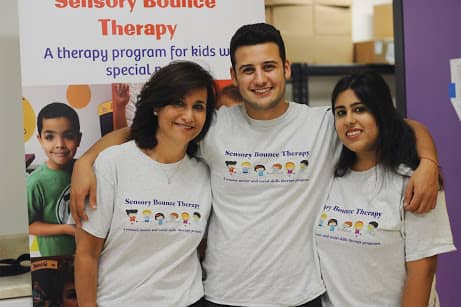How Occupational Therapy is necessary for Sensory Processing Disorder
Just like other neuro-developmental conditions sensory processing disorder is also idiopathic. However, there is a kind of believe in some researchers that the pathogenesis of sensory processing disorder is mainly multi-factorial.
Some of the other risk factors that are implicated in the development of sensory processing disorder are low socio-economic conditions and living with a single parent. The for kids are very reliable.
In different children, the key symptoms of sensory processing disorders generally vary in presentation and severity. To devise functional strategies and to discuss with the occupational therapist make sure that you keep a record of all the symptoms manifested by a child at home or school.
Few symptoms manifested by most children are that the child often responds uniquely or somewhat differently to the crowd, noise, strong smells, and variations in temperatures.
The response, reasoning, and functioning of the child are significantly altered by all the visual, sensory and tactile stimulations and can interfere with day to day activities like eating, learning and playing.
Due to blockade in the sensory integration children often present with difficulties like getting dressed, getting potty trained, and other minor motor skills, trouble in interacting with other children of the same age group, repetitive behavior like crashing or bumping into things and objects, frustration, emotional disability and anger issues are often displayed by child or they display sow self-esteem due to difficulty in performing at school and maintaining social interactions. Therapy for kids with low mood tone is essential.
For fruitful results, you can initiate the occupational therapy for sensory processing disorder as early as possible. Ideally, for a stepwise and schematic approach, it is recommended to speak to an occupational therapist.
We need occupational therapy to promote normal eating, sleeping and playing habits, and normal childhood development while preparing the children to interact with parents, peers, teachers and other people in their surroundings.
For a child occupational therapists usually, design functional and reasonable goals. For example, occupational therapist promotes initiating and promoting messy play, development of appropriate and functional pencil grip, execution of simple activities like teaching how to fasten buttons, and encouraging self and group play, for example, catching a ball.
In the formulation of a routine for your child occupational therapists also work with parents, so that at your home too, you can continue the therapy but in a playful manner that does not interfere with the confidence and self-esteem.
Sensory diets are also initiated by occupational therapists. These therapists offer therapy programs for low tone. This includes the active participation of siblings, parents, teachers and other members of the community who interact with the child.
To promote sensory development in an organized and structured atmosphere that is designed to stimulate the brain of child persistently, occupational therapists work with children. Via games and activities that are stimulating, interesting, and challenging the children are kept stimulated.
Conclusion
If your child is displaying features of sensory processing disorder, autism or other developmental defects there is a need to speak to an occupational therapist.
Author’s Bio
SensoryBounce is specialized in offering sensory, motor and social skills occupational therapy programs for low tone to the differently-abled children and classes for children with ADHD to help them master their sensory, motor and social skills! We perform therapies using a natural and fun environment. Visit www.sensorybounce.com for details.



Comments
Post a Comment